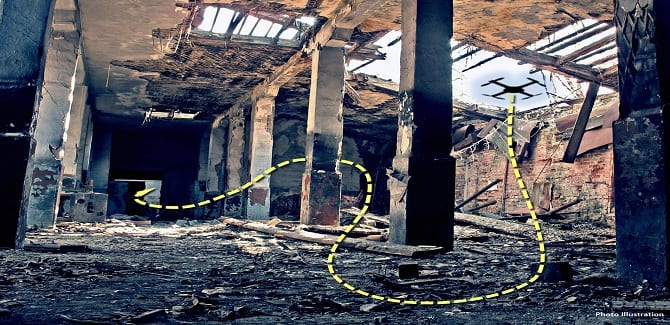DARPA wants drones and wants them intelligent enough to fly on their own and scout for dangers
The U.S. military wants to build more drones and this time, they want to make drones that have a computerized mind of their own to fly around and scout for dangers. To put it in simple words, the drones of today have to be manned by a pilot with remote control. The drones United States military aim to build, should be smart enough to navigate obstacles and reach the target all of its own accords. In short, they want a Hawk in the sky.
Table Of Contents
Fast Lightweight Autonomy
D.A.R.P.A. is the department of the military that has been handling the responsibility of the drone program and they made an announcement in this regard recently. They made it clear, that the intelligent machine they want has to be a drone, no birds, no unmanned aerial vehicles (UAVs) like the one previously developed either. These types of machines are already in use and have their own limitations which they wish to overcome.
The drone has to be able to figure out how to search an area, carry cameras, microphones and other sensors and be able to navigate indoors, with no assistance, a “labyrinth of rooms, stairways and corridors,” according to an announcement late yesterday from the Defense Advanced Research Projects Agency (DARPA).
The announcement by DARPA was for the Fast Lightweight Autonomy (FLA) program, for which the department has made an appeal for ideas and innovations that could help them build an unmanned aerial drone that can fly up to 45 miles per hour while navigating unfamiliar indoor spaces without the help of GPS coordinates or guidance from operators outside.
The end goal is to take an evolutionary step in the development of unmanned vehicles, making them much more capable and useful than the current generation of fault-prone remote-controlled ones whose intelligence is in the hands of its controller.
The FLA drones are supposed to be quick, independent robots who can create and follow their own search patterns, react correctly to the things they find and report back to operators who may have had to do nothing but watch the video feed as the FLA ‘bot searches.
Tough Requirements
What DARPA wants is very difficult to achieve in test conditions and almost unimaginable to accomplish in real-time conditions. They don’t need a drone that is just processing real-time sensory data, they want a machine that can read a situation, navigate through it and respond to particular stimuli – identifying flood survivors clinging to debris, for example, and signaling for help – requires something very close to a low-order artificial intelligence comparable to the birds or bugs DARPA uses as examples of what it wants, but without the self-awareness and self-determination obvious even in birds.
“What DARPA is going for is a UAV that would be able to dodge trees at impossible speeds while hunting mice through the woods – at least according to the announcement and this really cool POV video of a Goshawk casually threading needles no human pilot could manage at that speed or altitude.”
“Birds of prey and flying insects exhibit the kinds of capabilities we want for small UAVs. Goshawks, for example, can fly very fast through a dense forest without smacking into a tree,” according to a statement in the announcement from Mark Micire,DARPA program manager. “The goal of the FLA program is to explore non-traditional perception and autonomy methods that would give small UAVs the capacity to perform in a similar way, including an ability to easily navigate tight spaces at high speed and quickly recognize if it had already been in a room before.”
“The program focuses on autonomy and not on the flight platform, where “autonomy” includes sensing, perception, planning, and control,” according to another statement from Micire
DARPA wants to keep the focus on the technique of flight. They did not even specify what test conditions it might be flown in, or what will be the intended use of such a machine. All systems developed to meet these requirements will, however, undergo testing by DARPA itself.
Goals and Objectives
Stefanie Tompkins, director of DARPA’s Defense Sciences Office described the goals of the program in terms that were a little more down to earth, however: “By enabling unmanned systems to learn ‘muscle memory’ and perception for basic tasks like avoiding obstacles, it would relieve overload and stress on human operators so they can focus on supervising the systems and executing the larger mission,” she said in the announcement.
The Defense Sciences Office is “DARPA’s DARPA,” by the way, the division within DARPA specifically responsible for “high-risk/high-payoff research initiatives” that will eventually deliver “radically new military capabilities.”
Tomkins, who got her Ph.D. in geology from Brown, and was deputy director of the Strategic Technology Office, was leading a team that specialized in augmenting GPS and vision systems to aid soldiers during battle when other technologies failed. Because of her body of work, experts believe that the over-the-top view of this program that would have formed in your mind might actually be her final goal.

